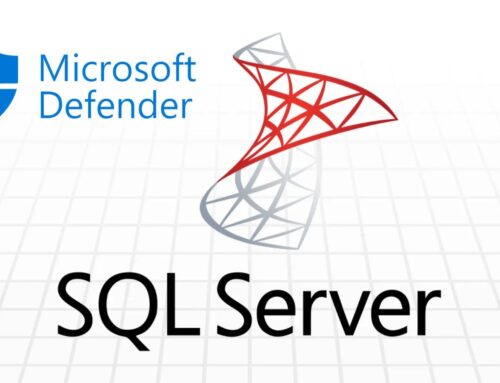
Cisco Secure Firewall Vulnerability Allows Hackers to Inject Remote Shell Command Injection
The cybersecurity landscape demands constant vigilance, especially when critical infrastructure devices are at stake. A recent disclosure by Cisco has sent ripples through the security community, revealing a severe vulnerability in their Secure Firewall Management Center (FMC) Software. This flaw, with its maximum severity rating, poses a direct threat to the integrity and control of enterprise firewall deployments.
Cisco Secure Firewall Zero-Day Vulnerability Unveiled
Cisco has announced a critical security flaw within its Secure Firewall Management Center (FMC) Software. This vulnerability, officially tracked as CVE-2025-20265, carries the highest possible CVSS score of 10.0. Such a score signifies an unauthenticated attacker’s ability to achieve catastrophic impact without significant effort or prior access.
Understanding the Threat: Remote Shell Command Injection
The core of CVE-2025-20265 lies in its potential for remote arbitrary shell command injection. This means an attacker, without needing any prior authentication, could remotely execute commands directly on the affected Firewall Management Center. The implications are profound:
- High-Level Privileges: The vulnerability allows attackers to run commands with elevated privileges, granting them extensive control over the FMC. This could lead to a complete compromise of the system.
- Network Compromise: A compromised FMC can serve as a pivot point for attackers to launch further attacks within an organization’s network, bypass security controls, or exfiltrate sensitive data.
- Denial of Service: Attackers could potentially disrupt firewall operations, rendering the network vulnerable or causing widespread service outages.
- Data Manipulation: With high-level access, attackers could alter firewall configurations, potentially creating backdoors or redirecting traffic.
This type of vulnerability represents one of the most severe security flaws imaginable in enterprise firewall infrastructure, underscoring the immediate need for a robust response from affected organizations.
Affected Products and Scope
While the initial report focuses on the Cisco Secure Firewall Management Center (FMC) Software, organizations should meticulously review all their Cisco Secure Firewall deployments and related management platforms. Given the critical nature of this flaw, it is prudent to assume broader potential impact until Cisco releases definitive patch information and a full list of affected versions.
Remediation Actions and Mitigation Strategies
Immediate action is paramount to protect your organization from CVE-2025-20265. Cybersecurity professionals should adhere to the following steps:
- Patch Immediately: The most crucial step is to apply any available patches or software updates released by Cisco. Continuously monitor Cisco’s official security advisories for the latest information and download the necessary updates.
- Network Segmentation and Access Control: Ensure that your FMC instances are appropriately isolated from the public internet. Implement strict network segmentation to limit access to FMC devices only from trusted management interfaces and authorized personnel.
- Strong Authentication and Least Privilege: Enforce strong, multi-factor authentication (MFA) for all administrative access to the FMC. Adhere to the principle of least privilege, ensuring that users and services only have the minimum necessary access rights.
- Regular Audits and Monitoring: Implement continuous monitoring of FMC logs for unusual activity, unauthorized access attempts, or command execution patterns. Conduct regular security audits and vulnerability assessments to identify and address potential weaknesses.
- Incident Response Plan: Update and review your incident response plan to include procedures for handling a compromise of your firewall management infrastructure. Ensure your team is prepared to detect, contain, eradicate, and recover from such an event.
- Threat Intelligence: Stay informed on the latest threat intelligence regarding this vulnerability and any evolving attack vectors. Subscribe to Cisco’s security alerts and reputable cybersecurity news sources.
Tools for Detection and Mitigation
Leveraging appropriate tools is essential for maintaining a strong security posture. While this is a zero-day at the time of the initial disclosure, the following general categories of tools are vital for detection, scanning, and mitigation:
| Tool Category | Purpose | Examples/Approach |
|---|---|---|
| Vulnerability Scanners | Identify known vulnerabilities, including potential misconfigurations or unpatched software, on network devices. | Nessus, OpenVAS, Qualys |
| Intrusion Detection/Prevention Systems (IDPS) | Monitor network traffic for malicious activity and known attack signatures. Can potentially block exploit attempts. | Cisco Firepower IPS, Snort, Zeek |
| Security Information and Event Management (SIEM) | Centralize and analyze security logs from various devices, enabling correlation and detection of suspicious behavior. | Splunk, IBM QRadar, Elastic SIEM |
| Network Access Control (NAC) | Enforce security policies on devices attempting to access the network, ensuring compliance before granting access. | Cisco ISE, ClearPass |
| Configuration Management Tools | Automate and enforce secure configurations across devices, reducing the attack surface. | Ansible, Puppet, Chef |
Conclusion: Prioritizing Firewall Security
The disclosure of CVE-2025-20265 in Cisco Secure Firewall Management Center Software is a stark reminder of the persistent and evolving threats to critical network infrastructure. A vulnerability with a CVSS score of 10.0 demands immediate and decisive action. Organizations must prioritize applying patches, reinforcing access controls, and enhancing monitoring capabilities to safeguard their networks against potential compromise. Proactive security measures, coupled with an agile incident response strategy, are the only effective defenses against such high-impact vulnerabilitie





